لوحة دوائر مطبوعة عالية الجودة بثماني طبقات
South-Electronic
اختر ساوث إلكترونيك للحصول على أفضل جودة وموثوقية وقيمة لاحتياجاتك من لوحات الدوائر المطبوعة. شاهد الفرق مع خدمتنا الشاملة للوحة ثمانية الطبقات – من التصميم إلى التسليم، نضمن لك الدقة والمتانة والامتثال لأعلى معايير الصناعة.
شريكك الموثوق لعدد 8 طبقات من لوحات الدوائر المطبوعة عالية الجودة
لماذا تختار ساوث إلكترونيك؟
ساوث إلكترونيك هو الحل المثالي لك. بأكثر من عشر سنوات من الخبرة، نقدم لوحات دوائر مطبوعة بثماني طبقات مصممة بدقة لتلبية أعلى المعايير في الصناعة. سواء كنت بحاجة إلى قطعة واحدة فقط أو طلب بكميات كبيرة، نقدم حلولًا مخصصة مع وقت استجابة سريع.
-
مرونة التخصيص
ستتمتع بحرية طلب ما تحتاجه بالضبط، سواء كان نموذجًا أوليًا واحدًا أو كميات إنتاج كبيرة.
تضمن قدراتنا المتقدمة في التخصيص تصميم وتصنيع لوحات دوائر مطبوعة بثماني طبقات تفي حتى بأكثر المواصفات تعقيدًا، مما يوفر لك حلولًا مخصصة تتماشى تمامًا مع متطلبات مشروعك. -
فريق ذو خبرة
يمكنك الوثوق بفريقنا من الخبراء المتمرسين، الذين لديهم أكثر من عشر سنوات من الخبرة العملية في تصنيع لوحات الدوائر المطبوعة.
من التصاميم المعقدة إلى حل التحديات التقنية، يتمتع مهندسونا بمهارة عالية في أحدث الاتجاهات والابتكارات في الصناعة، مما يضمن أن تكون لوحات دوائر مطبوعة بثماني طبقات عالية الجودة والدقة. -
رقابة جودة صارمة
ستستمتع بعملية سلسة حقًا من لحظة مشاركة تصميمك حتى التسليم النهائي للوحات الدوائر المطبوعة المكونة من 8 طبقات.
نحن نتعامل مع كل مرحلة من مراحل الإنتاج داخليًا، من النماذج الأولية إلى التجميع، باستخدام أحدث المعدات التي تضمن الدقة والسرعة والاتساق. رضاك هو أولويتنا، ونحن هنا لدعمك في كل خطوة. -
خدمة شاملة
ستجرب عملية سلسة تمامًا من اللحظة التي تشارك فيها تصميمك حتى التسليم النهائي لوحات دوائرك المطبوعة بثماني طبقات.
نحن نتولى كل مرحلة من مراحل الإنتاج داخليًا، من النمذجة إلى التجميع، باستخدام معدات متطورة تضمن الدقة والسرعة والاتساق. رضاك هو أولويتنا، ونحن هنا لدعمك في كل خطوة. -
تسليم سريع
ستستفيد من عمليات الإنتاج المنسقة لدينا والآلات المتقدمة التي تمكننا من الالتزام بالمواعيد النهائية الضيقة دون التضحية بالجودة.
سواء كان مشروعًا حساسًا للوقت أو طلبًا بكميات كبيرة، يمكنك الاعتماد علينا من أجل تسليم سريع وموثوق يحافظ على مشروعك في الجدول الزمني. -
رضا مضمون
ستقدر الثقة المصاحبة للعمل مع شركة معتمدة من ISO9001.
نحن نولي أهمية للاتصال الواضح والشفاف ونلتزم بأعلى المعايير، مما يضمن أن تكون لوحات دوائرك المطبوعة بثماني طبقات ليست فقط تلبي بل تتجاوز توقعاتك من حيث الأداء والمتانة والدقة.
المشاريع ذات الصلة التي نفذناها
آراء العملاء
الأسئلة الشائعة
الأسئلة الأكثر شيوعًا
أرسل لنا رسالة
كلما كانت التفاصيل أكثر دقة، كلما تمكنا من المضي قدمًا إلى الخطوة التالية أسرع.
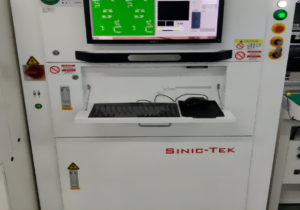
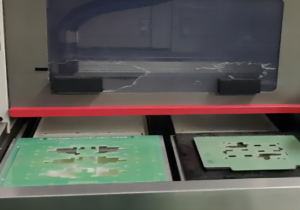
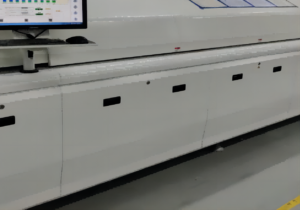
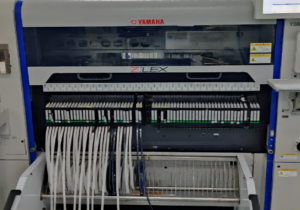
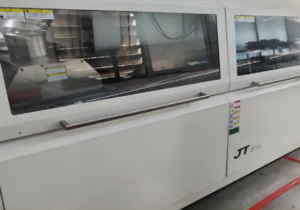
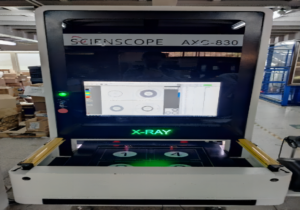

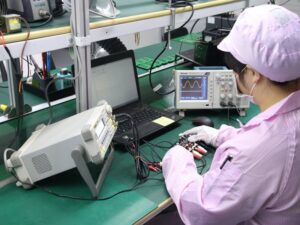

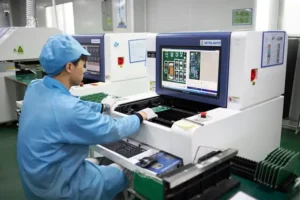



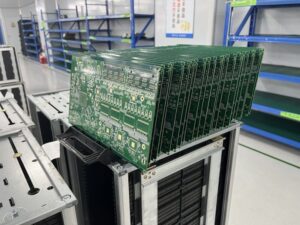

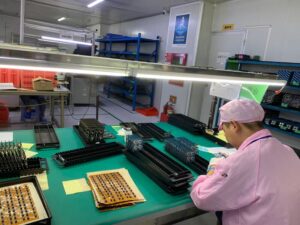



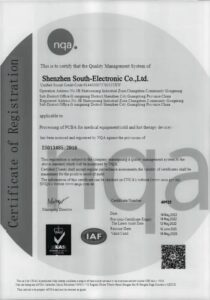
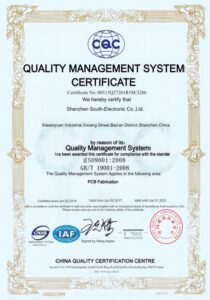







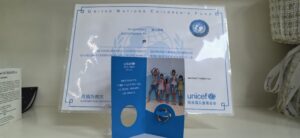

الدليل الشامل للوحات دوائر مطبوعة بثماني طبقات
المحتويات
الفصل 1
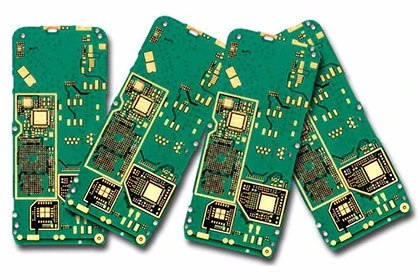
مقدمة في لوحات دوائر مطبوعة بثماني طبقات
ما هي لوحة دوائر مطبوعة بثماني طبقات؟
تعد لوحة الدوائر المطبوعة بثماني طبقات نوعًا من لوحات الدوائر المطبوعة متعددة الطبقات التي تحتوي على ثماني طبقات من المواد الناقلة، عادة ما تكون من النحاس، مفصولة بمواد عازلة (تسمى أيضًا المواد العازلة). يتم لصق هذه الطبقات معًا باستخدام الحرارة والضغط لإنشاء هيكل مدمج، قوي، وفعال. تسمح الطبقات الناقلة بتوجيه الإشارات الكهربائية المعقدة، بينما تمنع الطبقات العازلة التداخل بين الإشارات المختلفة على اللوحة.
باختصار، تعتبر لوحات الدوائر المطبوعة بثماني طبقات ضرورية لإنشاء أنظمة إلكترونية متقدمة وعالية الأداء، مما يجعلها حجر الزاوية للعديد من الصناعات، بما في ذلك الاتصالات، والسيارات، والطب، والتطبيقات الصناعية.
أهمية واستخدامات لوحات الدوائر المطبوعة بثماني طبقات في الإلكترونيات
تلعب لوحات الدوائر المطبوعة بثماني طبقات دورًا حاسمًا في الإلكترونيات الحديثة، خاصة في التطبيقات التي تكون فيها المساحة محدودة، ولكن الطلبات على الأداء عالية. توفر الطبقات الإضافية تحسينًا في سلامة الإشارة، وتوافقًا كهرومغناطيسيًا أفضل، وتعزيز توزيع الطاقة. تجعل هذه الفوائد لوحات الدوائر المطبوعة بثماني طبقات مثالية للتطبيقات التي تتطلب أداءً قويًا وموثوقية.
أهمية رئيسية:
سلامة الإشارة: مع توفر المزيد من الطبقات، يمكن فصل مسارات الإشارة بشكل أفضل، مما يقلل من التداخل والتشويش. يؤدي ذلك إلى إشارات أنظف وتحسين الأداء، خاصة في نقل البيانات عالية السرعة.
توزيع الطاقة: تسمح الطبقات الإضافية بتوزيع أكثر كفاءة لخطوط الطاقة، مما يقلل من انخفاض الجهد ويضمن توفير طاقة مستقر لجميع المكونات.
التصغير: تمكّن لوحات الدوائر المطبوعة بثماني طبقات المصممين من زيادة الوظائف في أجهزة أصغر، وهو أمر ضروري للإلكترونيات الحديثة مثل الهواتف الذكية والأجهزة القابلة للارتداء.
إدارة الحرارة: يمكن أن تساعد الطبقات الإضافية في إدارة الحرارة بشكل أكثر فعالية، وهو أمر حيوي للمكونات عالية الأداء.
الاستخدامات الشائعة:
الاتصالات: تستخدم لوحات الدوائر المطبوعة بثماني طبقات بشكل شائع في أجهزة الشبكات مثل أجهزة التوجيه، والمبدلات، ومعدات الاتصالات، حيث يعتبر نقل البيانات عالي السرعة أمرًا أساسيًا.
الإلكترونيات السيارة: في المركبات الحديثة، تستخدم لوحات الدوائر المطبوعة بثماني طبقات للأنظمة المتقدمة مثل وحدات التحكم في المحرك (ECUs)، ووحدات GPS، وأنظمة المعلومات والترفيه التي تتطلب تصميمات مدمجة وأداء موثوق.
الأجهزة الطبية: تجعل الدقة والموثوقية في لوحات الدوائر المطبوعة بثماني طبقات مناسبة للأجهزة الطبية، بما في ذلك آلات التشخيص ومعدات التصوير، حيث تكون الدقة مهمة.
الأتمتة الصناعية: تُستخدم لوحات الدوائر المطبوعة بثماني طبقات في أنظمة التحكم الصناعية ومعدات الأتمتة، حيث تكون المتانة وسلامة الإشارة والأداء العالي المطلوبة.
في النهاية، تعتبر لوحات الدوائر المطبوعة بثماني طبقات ضرورية لإنشاء أنظمة إلكترونية متقدمة وعالية الأداء، مما يجعلها حجر الزاوية للعديد من الصناعات، بما في ذلك الاتصالات، والسيارات، والطب، والتطبيقات الصناعية.
الفصل 2
مزايا استخدام لوحات دوائر مطبوعة بثماني طبقات
1. تحسين سلامة الإشارة وتقليل التداخل
تعد إحدى أكبر مزايا استخدام لوحة دوائر مطبوعة بثماني طبقات هي التحسين الكبير في سلامة الإشارة. تشير سلامة الإشارة إلى جودة الإشارات الكهربائية أثناء انتقالها عبر اللوحة. في التصاميم ذات الطبقات القليلة، يمكن أن تكون مسارات الإشارة أطول، مما يؤدي إلى مشكلات محتملة مثل فقدان الإشارة، والتداخل المتبادل، والتداخل الكهرومغناطيسي (EMI). يمكن أن تؤدي هذه المشكلات إلى تدهور أداء الجهاز، خاصة في التطبيقات عالية السرعة.
مع لوحة دوائر مطبوعة بثماني طبقات، تتيح الطبقات الإضافية مزيدًا من الفصل بين مسارات الإشارة، مما يقلل من احتمال تداخلها. بالإضافة إلى ذلك، يمكن تخصيص طبقات معينة للأرض أو توزيع الطاقة، مما يساعد على حماية مسارات الإشارة الحساسة من التداخل. ونتيجة لذلك، يُحسن هذا الفصل الإضافي للأرض جودة الإشارات العامة، مما يجعل اللوحة مناسبة للتطبيقات عالية التردد مثل الاتصالات، ومعالجة البيانات، والدارات اللاسلكية.
الفوائد الرئيسية:
- تقليل التداخل المتبادل بين الإشارات بسبب إدارة الطبقات الأفضل.
- تحسين الحماية مع وجود طبقات أرضية وطاقة مخصصة.
- مناسبة للتطبيقات عالية السرعة وعالية التردد حيث تكون سلامة الإشارة حاسمة.
2. كثافة مكونات أكبر وكفاءة في استخدام الفضاء
مع استمرار تقلص حجم الأجهزة الإلكترونية مع زيادة الوظائف، أصبحت الحاجة إلى لوحات دوائر مطبوعة مدمجة وعالية الكثافة أكثر أهمية. توفر لوحة دوائر مطبوعة بثماني طبقات ميزة كبيرة من خلال السماح للمصممين باستيعاب المزيد من المكونات والتوجيه المعقد في مساحة أصغر. هذا مفيد بشكل خاص للأجهزة التي يكون فيها الفضاء شديد الأهمية، مثل الهواتف الذكية، والأجهزة اللوحية، والإلكترونيات القابلة للارتداء.
تسمح الطبقات المتعددة في لوحة دوائر مطبوعة بثماني طبقات بالتوجيه الأكثر كفاءة للإشارات، مما يقلل الحاجة إلى مسارات طويلة ومنحنية على الطبقات السطحية. وهذا لا يوفر فقط المساحة، بل يقصر أيضًا مسارات الإشارة، مما يسهم في تحسين الأداء. بالإضافة إلى ذلك، يتيح العدد الأكبر من الطبقات مزيدًا من المرونة في وضع المكونات، مما يمكّن المصممين من زيادة الوظائف في بصمة أصغر دون المساومة على أداء أو سلامة الدائرة.
الفوائد الرئيسية:
- تتيح كثافة المكونات الأعلى توفير المزيد من الوظائف في الأجهزة المدمجة.
- التوجيه الفعال مع مسارات إشارة أقصر يحسن الأداء العام.
- كفاءة المساحة تمكّن من إنتاج إلكترونيات أصغر وأكثر قوة.
3. تحسين تبديد الحرارة
تعد إدارة الحرارة اعتبارًا حاسمًا في تصميم لوحات الدوائر المطبوعة، خاصةً للتطبيقات ذات الطاقة العالية أو الأجهزة التي تعمل باستمرار لفترات طويلة. يمكن أن تؤدي الحرارة الزائدة إلى تدهور أداء وعمر المكونات، مما يجعل تبديد الحرارة الفعال أمرًا ضروريًا.
توفر لوحة دوائر مطبوعة بثماني طبقات تبديد حرارة أفضل من الألواح ذات الطبقات الأقل لأن الطبقات الإضافية يمكن أن تساعد في توزيع الحرارة بشكل أكثر توازنًا عبر اللوحة. في لوحات الدوائر المطبوعة متعددة الطبقات، يمكن استخدام ثقوب حرارية – ثقوب صغيرة مليئة بمادة موصلة – لنقل الحرارة من الطبقات السطحية إلى الطبقات الداخلية، حيث يمكن تبديدها بشكل أكثر فعالية. يقلل ذلك من تركيز الحرارة في أي منطقة معينة، مما يساعد على حماية المكونات الحساسة من الضرر الحراري.
علاوة على ذلك، تتيح الطبقات الإضافية تضمين طبقات نحاسية أكثر سمكًا مخصصة لتوزيع الطاقة، مما يساعد على نقل الحرارة بعيدًا عن المناطق الحرجة. وهذا مهم بشكل خاص في التطبيقات مثل الآلات الصناعية، والإلكترونيات السيارة، ومصادر الطاقة، حيث يمكن أن تؤدي الحرارة الزائدة إلى التأثير على الاعتمادية والأداء.
الفوائد الرئيسية:
- إدارة حرارية أفضل من خلال توزيع الحرارة المتوازن عبر الطبقات.
- الثقوب الحرارية تحسن من تبديد الحرارة، مما يحمي المكونات من ارتفاع درجة الحرارة.
- مناسبة للتطبيقات عالية الطاقة والبيئات التي تشكل فيها الحرارة مصدر قلق.
الخاتمة
باختصار، تجعل مزايا لوحات الدوائر المطبوعة بثماني طبقات منها اختيارًا مثاليًا للتطبيقات عالية الأداء، المحدودة في المساحة، والحساسة للحرارة. تضمن تحسين سلامة الإشارة، زيادة كثافة المكونات، وتحسين تبديد الحرارة أن هذه اللوحات مناسبة للتكنولوجيا المتقدمة عبر صناعات مثل الاتصالات، والسيارات، والأتمتة الصناعية.

الفصل 3
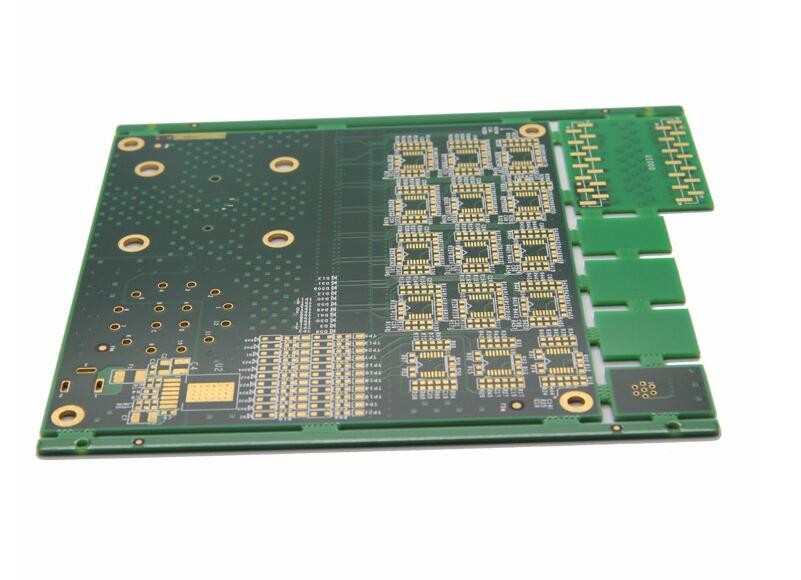
تصميم طبقات لوحة دوائر مطبوعة بثماني طبقات
شرح هيكل الطبقات
يشير تصميم الطبقات في لوحة الدوائر المطبوعة إلى كيفية ترتيب طبقات النحاس (المستخدمة في توصيل الإشارات والطاقة) والمواد العازلة (المعروفة بالمواد العازلة) في اللوحة. في لوحة دوائر مطبوعة بثماني طبقات، هناك ثماني طبقات موصلة، عادة ما تكون مصنوعة من النحاس، تفصلها طبقات من المواد العازلة. يعد تصميم الطبقات أمرًا حاسمًا لأنه يؤثر بشكل مباشر على أداء اللوحة الكهربائي، وقابلية التصنيع، والتكلفة.
في لوحة دوائر مطبوعة بثماني طبقات قياسية، يتم ترتيب الطبقات بترتيب محدد، عادةً مع وجود طبقات الإشارة في الطبقات الخارجية وطبقات الطاقة والأرضية في المنتصف. تساعد هذه الترتيبات في الحفاظ على سلامة الإشارة، وتقليل الضوضاء، وتوفير شبكة توزيع طاقة مستقرة. الهدف من تصميم الطبقات الجيد هو إنشاء هيكل مثالي يقلل من التداخل الكهرومغناطيسي (EMI)، ويدعم الإشارات عالية السرعة، ويدير توزيع الطاقة بفاعلية.
عادةً ما تتكون تصميمات 8 طبقات من طبقات متناوبة من إشارات وطبقات طاقة/أرضية:
- طبقات الإشارة: تستخدم لتوجيه الإشارات الكهربائية بين المكونات.
- طبقات الأرض: توفر نقطة مرجعية للإشارات، مما يساعد على تقليل الضوضاء والتداخل الكهرومغناطيسي.
- طبقات الطاقة: توزع الطاقة على المكونات مع الحد من انخفاض الجهد والتداخل.
كيفية تحسين ترتيب الطبقات لسلامة الإشارة، وتوزيع الطاقة، و تأريض
يلعب ترتيب الطبقات في لوحة دوائر مطبوعة بثماني طبقات دورًا حيويًا في تحقيق سلامة الإشارة المثلى، وتوزيع الطاقة، والتأريض. إليك بعض الاستراتيجيات الرئيسية لتحسين تصميم الطبقات:
سلامة الإشارة:
الطبقات المتناوبة من الإشارة والأرض: يساعد وضع طبقات الإشارة بجانب طبقات الأرض (أو طبقات الطاقة) في حماية الإشارات وتقليل التداخل الكهرومغناطيسي. تقلل هذه التكوينات من فرص التداخل المتبادل بين الإشارات، خاصةً في الدوائر عالية السرعة.
تقليل أطوال مسارات الإشارة: يقلل الحفاظ على مسارات الإشارة قصيرة ووضع الإشارات ذات الصلة في نفس الطبقات أو الطبقات المجاورة من تأخير وفقدان الإشارة، مما يحسن الأداء العام.
توجيه الأزواج التفاضلية: للاشارات عالية السرعة، استخدم أزواج تفاضلية (مسارين متقاربين يحملان إشارات متساوية ومعاكسة) على طبقات الإشارة لتعزيز مناعة الضجيج.
توزيع الطاقة:
طبقات طاقة مخصصة: يخلق وضع طبقة الطاقة بجانب طبقة الأرض مسار ذو حث منخفض لتوزيع الطاقة، مما يقلل من تقلبات الجهد ويضمن توصيل طاقة مستقرة. يعد هذا بالغ الأهمية في الدوائر ذات القدرة العالية.
تحسين مكان الطبقات الخاصة بالطاقة والأرض: يجب إقران طبقات الطاقة والأرض بشكل وثيق لإنشاء “ساندويتش طاقة”، مما يقلل من المقاومة ويوفر تدفق طاقة أكثر سلاسة للمكونات.
التأريض:
الطبقات الأرضية المتعددة: يساعد وجود طبقات أرضية متعددة في التصميم على تحسين الحماية، وتقليل الضوضاء، وتوفير مرجع ثابت للإشارات. تعتبر طبقات الأرض ضرورية للحفاظ على سلامة الإشارة، لا سيما في التطبيقات عالية التردد.
ثقوب واتصالات الأرض: إضافة العديد من ثقوب الأرض (الاتصالات العمودية بين الطبقات) تساعد في ضمان التأريض المناسب عبر جميع الطبقات، مما يقلل من خطر انحطاط الإشارة.
الفصل 4
اختيار المواد للوحات دوائر مطبوعة بثماني طبقات
يعد اختيار المواد الصحيحة لوحات دوائر مطبوعة بثماني طبقات أمرًا حيويًا لتحقيق الأداء المطلوب، والمتانة، والكفاءة من حيث التكلفة لتطبيقك المحدد. تؤثر المادة بشكل رئيسي على الخصائص الكهربائية، والحرارية، والميكانيكية للوحة الدائرة المطبوعة، مما يؤثر بدوره على سلامة الإشارة، وتبديد الحرارة، والموثوقية العامة. في هذا القسم، سنستعرض أفضل المواد للوحات الدوائر المطبوعة بثماني طبقات، واستخداماتها المحددة، وكيف يؤثر اختيار المواد على الأداء والتكلفة والمتانة.
أفضل المواد لتطبيقات مختلفة
FR4 (مادة مقاومة للاشتعال 4)
نظرة عامة: تعتبر FR4 واحدة من أكثر المواد استخدامًا في قاعدة دوائر الطباعة. إنها عبارة عن لامينة إيبوكسي مدعمة بالزجاج توفر عزلًا كهربائيًا ممتازًا، وقوة ميكانيكية، ومقاومة للرطوبة والحرارة.
التطبيقات: تستخدم FR4 على نطاق واسع في الإلكترونيات الاستهلاكية، والاتصالات، وإلكترونيات السيارات، والمعدات الصناعية. إنها مناسبة للتطبيقات ذات التردد المنخفض إلى المتوسط حيث تكون التكلفة عاملاً مهمًا.
المزايا:
- تكلفة منخفضة ومتاحة على نطاق واسع.
- قوة ميكانيكية جيدة وعزل كهربائي.
- مناسبة للتطبيقات العامة، بما في ذلك التصاميم متعددة الطبقات مثل لوحات الدوائر المطبوعة بثماني طبقات.
العيوب:
- أداء محدود في التردد العالي بسبب الخسائر العازلة الأعلى مقارنة بالمواد المتخصصة مثل Rogers.
- موصلية حرارية منخفضة، مما يجعلها أقل مثالية للتطبيقات التي تحتوي على توليد حرارة كبير.
Rogers (لامينات التردد العالي)
نظرة عامة: تعتبر Rogers مادة عالية الأداء معروفة بخواصها العازلة الممتازة وخسارة الإشارة المنخفضة عند الترددات العالية. تُستخدم عادةً في التطبيقات التي تتطلب سلامة إشارة فائقة، مثل الدوائر RF والميكروويف.
التطبيقات: تُستخدم لامينات Rogers في الأنظمة الرقمية ذات السرعة العالية، والاتصالات، والميكروويف، حيث يجب تقليل خسارة الإشارة. إنها مثالية للتطبيقات المتقدمة مثل أنظمة الرادار، وشبكات 5G، والاتصالات الفضائية.
المزايا:
- ثابت عازل منخفض وخسارة إشارة منخفضة، مما يجعلها مثالية للتطبيقات عالية التردد والسرعة.
- موصلية حرارية عالية، مما يسمح بتبديد حرارة أفضل.
- ثبات فائق في البيئات ذات الرطوبة العالية أو التقلبات في درجات الحرارة.
العيوب:
- أغلى من FR4، مما قد يزيد من تكلفة الإنتاج بشكل كبير.
- قد تكون أكثر تحديًا في المعالجة، مما يتطلب معدات وتقنيات متخصصة.
Polyimide
نظرة عامة: يعد بوليميد مادة مرنة ذات درجة حرارة عالية معروفة بخواصها الحرارية والميكانيكية الممتازة. تُستخدم غالبًا في التطبيقات التي تتطلب كل من المرونة والمتانة، مثل لوحات دوائر مرنة ومرنة صلبة.
التطبيقات: يُستخدم بوليميد بشكل شائع في الفضاء، والجيش، والتطبيقات الطبية حيث تحتاج اللوحات إلى تحمل ظروف بيئية قصوى أو الانحناء والت flexing المتكرر.
المزايا:
- استقرار حراري ممتاز ويمكن أن يتحمل درجات حرارة قصوى.
- مرونة ميكانيكية عالية، مما يجعلها مثالية للوحات الدوائر المرنة والتطبيقات التي تتطلب حركة أو انحناء.
- خصائص عزل كهربائي جيدة ومقاومة كيميائية.
العيوب:
- تكلفة أعلى من FR4، خاصةً في تصاميم لوحات مرنة صلبة.
- تصنيعها أكثر تعقيدًا قليلاً، مما يتطلب تقنيات متقدمة للإنتاج.
PTFE (بوليترافلورإيثيلين)
نظرة عامة: يُعتبر PTFE مادة بوليمر فلوري صناعية معروفة بثابتها العازل المنخفض وقدراتها على التردد العالي. يُستخدم غالبًا في تطبيقات الميكروويف وRF بفضل خصائصه الكهربائية الممتازة.
التطبيقات: يُستخدم PTFE في أنظمة الاتصالات عالية التردد، والهوائيات، والأجهزة RF حيث تكون خسارة الإشارة والتداخل في غاية الأهمية.
المزايا:
- ثابت عازل منخفض للغاية، مما يجعله مثاليًا للدورات عالية التردد.
- غير تفاعلي كيميائيًا ومقاوم لدرجات الحرارة العالية والبيئات القاسية.
- ممتاز في تقليل خسارة الإشارة في التطبيقات الحساسة RF والميكروويف.
العيوب:
- مكلف مقارنة بالمواد الأخرى مثل FR4، مما يمكن أن يزيد من تكاليف الإنتاج.
- صعب المعالجة والتصنيع، مما يتطلب تقنيات وأدوات متخصصة.
أثر اختيار المواد على الأداء، والتكلفة، والمتانة
الأداء
سلامة الإشارة: يؤثر اختيار المادة بشكل مباشر على الأداء الكهربائي للوحة الدائرة المطبوعة. تتطلب التطبيقات عالية التردد، مثل الدوائر RF والميكروويف، مواد ذات ثابت عازل منخفض وخسارة إشارة منخفضة (مثل Rogers أو PTFE). بالنسبة للتطبيقات العامة حيث لا تكون إشارات التردد العالي مصدر قلق، توفر FR4 خيارًا فعالاً من حيث التكلفة مع تقديم مستوى جيد من سلامة الإشارة للحالات ذات التردد المنخفض إلى المتوسط.
إدارة الحرارة: تعتبر المواد مثل Rogers وPolyimide لديها موصلية حرارية أفضل من FR4، مما يجعلها أكثر ملاءمة للتطبيقات ذات المتطلبات العالية من الطاقة أو تلك التي تولد حرارة كبيرة. يضمن اختيار مادة ذات خصائص تبديد حرارة أفضل عمرًا أطول للمكونات ويقلل من خطر التلف الحراري.
الخصائص الميكانيكية: تستفيد التطبيقات التي تتطلب المرونة، مثل تلك المستخدمة في الفضاء أو الأجهزة الطبية، من المواد مثل Polyimide، التي تقدم مرونة ميكانيكية ومتانة في البيئات الديناميكية. تكون المواد الأكثر صلابة مثل FR4 أفضل تناسبًا للتصميمات الصلبة حيث لا تُطلب المرونة الميكانيكية.
التكلفة
تكلفة المواد: تعتبر FR4 عمومًا المادة الأكثر تكلفة وتوافرًا على نطاق واسع، مما يجعلها الاختيار المفضل للعديد من التطبيقات العامة. تعتبر المواد الأخرى مثل Rogers وPolyimide وPTFE خيارات أكثر تكلفة، وعادة ما تُستخدم في التطبيقات المتخصصة أو عالية الأداء حيث تبرر فوائد تعزيز سلامة الإشارة، وإدارة الحرارة، أو المرونة التكاليف الإضافية.
تعقيد التصنيع: تتطلب بعض المواد، مثل PTFE وRogers، عمليات تصنيع متخصصة، مما قد يزيد من التكلفة الإجمالية للإنتاج. على سبيل المثال، قد تحتاج مواد Rogers إلى معدات أكثر تقدمًا للت laminate والحفر، مما يجعلها أغلى في الإنتاج مقارنة بألواح FR4. بالإضافة إلى ذلك، يمكن أن تزيد الكومات المعقدة والتصاميم ذات الطبقات العالية التردد من التكاليف بسبب الدقة المطلوبة.
المتانة
مقاومة الحرارة والمواد الكيميائية: تقدم المواد مثل Polyimide وPTFE مقاومة فائقة لدرجات الحرارة العالية والبيئات القاسية مقارنةً بـ FR4، مما يجعلها أكثر متانة في التطبيقات حيث تكون الضغوط البيئية مصدر قلق. على سبيل المثال، في التطبيقات الجوية أو الصناعية، تعتبر المواد التي يمكن أن تتحمل الحرارة الشديدة، أو الرطوبة، أو التعرض الكيميائي أساسًا لضمان موثوقية اللوحة على المدى الطويل.
القوة الميكانيكية: بالنسبة للتطبيقات التي تتطلب أداءً ميكانيكيًا قويًا، مثل الإلكترونيات الخاصة بالسيارات أو الصناعات، توفر مواد مثل FR4 وPolyimide الصلابة أو المرونة اللازمة. يُعتبر Polyimide على وجه الخصوص مناسبًا للدارات المرنة التي تحتاج إلى الانحناء دون فقدان سلامة الهيكل.
الخاتمة
يعد اختيار المواد واحدة من أهم القرارات في تصميم لوحات الدوائر المطبوعة بثماني طبقات لأنها تؤثر بشكل مباشر على الأداء، والتكلفة، والمتانة للمنتج النهائي. بينما تعتبر FR4 خيارًا فعّالًا من حيث التكلفة للتطبيقات العامة، فإن المواد المتقدمة مثل Rogers وPolyimide وPTFE مثالية للتطبيقات عالية التردد، وعالية الحرارة، والمرنة. سيساعدك فهم المتطلبات المحددة لمشروعك على اختيار المادة المناسبة، موازنًا بين احتياجات الأداء مع التكلفة وقابلية التصنيع.
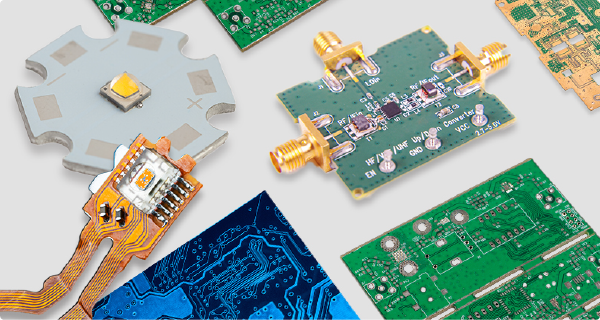
الفصل 5

التطبيقات
تعتبر لوحات الدوائر المطبوعة بثماني طبقات مهمة في العديد من الأنظمة الإلكترونية المتقدمة، خاصة في الصناعات التي تتطلب أداءً عاليًا، وسلامة الإشارة، وكفاءة المساحة. توفر الطبقات الإضافية مزيدًا من المرونة في تصميم الدائرة الخاصة بك، مما يعني أنه يمكنك تنفيذ أشياء أكثر تعقيدًا، وإدارة حرارية أفضل، وسلامة إشارة أفضل. إليك بعض من أكثر الأماكن شيوعًا وأهمية التي يمكنك استخدامها فيها لوحات دوائر مطبوعة بثماني طبقات.
1. الاتصالات عالية السرعة
نظرة عامة: تعد صناعة الاتصالات من الاستخدامات الرئيسية للوحات الدوائر المطبوعة بثماني طبقات، وذلك بسبب الحاجة إلى نقل البيانات بسرعة عالية وسلامة الإشارة. مع زيادة معدلات البيانات وتعقيد الأجهزة، يصبح الحفاظ على سلامة الإشارات على مسافات طويلة وبسرعات عالية أمرًا حاسمًا. تتيح الطبقات الإضافية في لوحة الدوائر المطبوعة بثماني طبقات تحسين توجيه الإشارة، وتعزيز التأريض، وتقليل التداخل الكهرومغناطيسي (EMI)، وهي جميعها عوامل حاسمة في نظم الاتصالات.
الاستخدامات الرئيسية:
معدات الشبكات: تعتمد أجهزة مثل الموجهات والمفاتيح والمودمات على لوحات دوائر مطبوعة بثماني طبقات للتعامل مع كميات كبيرة من البيانات بسرعات عالية. تساعد الطبقات الإضافية في فصل مسارات الإشارة، وتقليل التداخل المتبادل، وتوفير توزيع طاقة مستقر، مما يضمن أداء موثوق في بيئات الشبكات.
تقنية 5G: مع انتقال العالم نحو 5G، تزداد الحاجة إلى لوحات دوائر مطبوعة يمكنها دعم الإشارات عالية التردد والحفاظ على سلامة الإشارة. تلعب لوحات دوائر مطبوعة بثماني طبقات دورًا مهمًا في البنية التحتية وراء تقنية 5G، من محطات القاعدة إلى الأجهزة المحمولة.
الألياف الضوئية: تستفيد نظم الاتصالات بالألياف الضوئية، التي تتطلب زمن استجابة منخفض جدًا ومعالجة بيانات سريعة، من سلامة الإشارة وإدارة الطاقة الفعالة التي توفرها لوحات الدوائر المطبوعة بثماني طبقات.
فوائد الاتصالات عالية السرعة:
- تقليل التداخل والإشارات المتقاطعة بسبب الفصل الأفضل بين الطبقات.
- تحسين سلامة الإشارات عند الترددات العالية، وهو أمر أساسي لنقل البيانات بسرعة.
- مرونة أكبر في التوجيه لاستيعاب الدوائر المعقدة لتطبيقات الاتصالات.
2. الإلكترونيات السياراتية
نظرة عامة: تعتمد صناعة السيارات بشكل متزايد على الأنظمة الإلكترونية لإدارة كل شيء من وحدات التحكم في المحرك (ECUs) إلى أنظمة مساعدة السائق المتقدمة (ADAS). تعتبر لوحات الدوائر المطبوعة بثماني طبقات أساسية لإدارة تعقيد المركبات الحديثة، حيث تسمح بكثافة مكونات أعلى ودارات أكثر تعقيدًا في مساحة مضغوطة. يجب أن تتحمل الإلكترونيات السياراتية أيضًا الظروف البيئية القاسية، بما في ذلك درجات الحرارة المرتفعة والاهتزازات، مما يجعل متانة اللوحة بثماني طبقات حاسمة.
الاستخدامات الرئيسية:
وحدات التحكم في المحرك (ECUs): تتحمل ECUs مسؤولية التحكم في وظائف مختلفة لمحرك السيارة، مثل حقن الوقود، توقيت الإشعال، والتحكم في الانبعاثات. تتطلب هذه الأنظمة لوحات دوائر موثوقة متعددة الطبقات لإدارة البيانات المعقدة وأنظمة التحكم التي تضمن كفاءة المحرك وأداءه.
أنظمة مساعدة السائق المتقدمة (ADAS): تشمل ADAS ميزات مثل تحذيرات مغادرة المسار، وتجنب التصادم، والتحكم التكيفي في السرعة. تعتمد هذه الأنظمة على العديد من المستشعرات والكاميرات وتقنيات الرادار، جميعها تتطلب لوحات دوائر عالية الأداء لمعالجة البيانات بسرعة ودقة.
أنظمة المعلومات والترفيه في المركبات (IVI): تجمع أنظمة الترفيه المعلوماتية بين وظيفة الصوت والفيديو والملاحة. تتطلب تكامل هذه الميزات المختلفة لوحات دوائر بإمكانية نقل بيانات عالية السرعة وتوزيع طاقة مستقر لضمان التشغيل السلس.
فوائد الإلكترونيات السياراتية:
- متانة وموثوقية معززة لتحمل ظروف السيارات القاسية.
- دعم للدوائر المعقدة والكثيفة المطلوبة من الأنظمة السياراتية الحديثة.
- تحسين إدارة الحرارة، وهو أمر حاسم في الإلكترونيات السياراتية لمنع ارتفاع درجة الحرارة.
3. الأجهزة الطبية
نظرة عامة: تتطلب الأجهزة الطبية كثيرًا من الأحيان لوحات دوائر يمكن أن توفر دقة عالية وموثوقية وطول عمر. تتضمن العديد من التطبيقات الطبية معالجة بيانات حساسة، حيث يمكن أن تؤثر حتى أدنى إشارة تداخل على الأداء. تُستخدم لوحات الدوائر المطبوعة بثماني طبقات على نطاق واسع في المعدات الطبية لقدرتها على التعامل مع الدوائر المعقدة مع الحفاظ على سلامة الإشارة وضمان موثوقية على المدى الطويل.
الاستخدامات الرئيسية:
أنظمة التصوير التشخيصي: تعتمد الأجهزة الطبية مثل أجهزة التصوير بالرنين المغناطيسي (MRI)، والأشعة المقطعية (CT)، وأجهزة الموجات فوق الصوتية على دوائر معقدة تتطلب نقل إشارات دقيقة. يساعد التصميم متعدد الطبقات لوحات الدوائر المطبوعة بثماني طبقات في ضمان أن تكون هذه الإشارات واضحة وخالية من التداخل، وهو أمر حاسم للتشخيص الدقيق.
الأجهزة الطبية المحمولة: تتطلب الأجهزة المحمولة مثل أجهزة مراقبة القلب، ومضخات الأنسولين، وأدوات التشخيص المحمولة لوحات دوائر مضغوطة وخفيفة الوزن ذات موثوقية عالية. تسمح لوحات الدوائر المطبوعة بثماني طبقات بتضمين مزيد من المكونات في حجم أقل، مما يجعلها مثالية للتطبيقات الطبية المحمولة.
معدات الجراحة: تتضمن أدوات الجراحة عالية الدقة عادةً مكونات إلكترونية تساعد الجراحين أثناء الإجراءات. يجب أن تكون هذه الأجهزة موثوقة للغاية، حيث أن أي فشل قد يؤدي إلى عواقب وخيمة. توفر لوحات الدوائر المطبوعة بثماني طبقات التعقيد والمتانة المطلوبين لمثل هذه المعدات عالية المخاطر.
فوائد الأجهزة الطبية:
- موثوقية عالية ومتانة للتطبيقات الحيوية.
- تصميم مدمج يسمح بالتكامل في الأجهزة الطبية المحمولة أو الأقل تدخلاً.
- تقليل التداخل في الإشارات، وهو أمر أساسي للأدوات التشخيصية والمراقبة الدقيقة.
4. التحكم الصناعي
نظرة عامة: تتطلب أنظمة التحكم الصناعي، مثل تلك المستخدمة في الأتمتة، والروبوتات، وإدارة الطاقة، لوحات دوائر قادرة على التعامل مع أحمال الطاقة العالية، والخوارزميات التحكم المعقدة، والبيئات الخطرة. توفر لوحات الدوائر المطبوعة بثماني طبقات العدد اللازم من الطبقات لاستيعاب التوجيه الشامل وإدارة الطاقة المطلوبة من الإلكترونيات الصناعية الحديثة. بالإضافة إلى ذلك، فإن قدراتها المحسَّنة في إدارة الحرارة تجعلها مناسبة تمامًا للتطبيقات عالية الطاقة.
الاستخدامات الرئيسية:
أنظمة الأتمتة: تعتمد المصانع والمرافق الصناعية على أنظمة الأتمتة للسيطرة على العمليات والآلات. تحتاج هذه الأنظمة إلى معالجة كميات كبيرة من البيانات في الوقت الفعلي وغالبًا ما تعمل في ظروف صعبة. توفر لوحات الدوائر المطبوعة بثماني طبقات المتانة، وسلامة الإشارة، وإدارة الطاقة اللازمة لمثل هذه التطبيقات.
الروبوتات: تحتاج الروبوتات المستخدمة في التصنيع والرعاية الصحية والبحث إلى أنظمة تحكم معقدة لإدارة الحركة، والمستشعرات، ومعالجة البيانات. تساعد لوحات الدوائر المطبوعة بثماني طبقات في دمج عدة أنظمة فرعية مع الحفاظ على سلامة الإشارة التي تحتاجها للعمل بدقة.
مزودات الطاقة: تحتاج مزودات الطاقة الصناعية إلى لوحات دوائر قادرة على التعامل مع الجهد والتيار العاليين مع ضمان تبديد الحرارة بكفاءة. تتيح الطبقات الإضافية في لوحة دوائر مطبوعة بثماني طبقات توزيع أفضل لخطوط الطاقة وتساعد على إدارة الأحمال الحرارية بشكل فعال.
فوائد التحكم الصناعي:
- تحسين توزيع الطاقة وإدارة الحرارة لتطبيقات ذات تيار مرتفع.
- القدرة على دعم تصميمات دوائر معقدة وعالية الكثافة في الأنظمة الصناعية.
- القدرة على التحمل والمتانة لتحمل الظروف الصناعية القاسية.
5. تطبيقات أخرى
تتوفر لوحات الدوائر المطبوعة بثماني طبقات أيضًا في العديد من المجالات المتقدمة الأخرى:
الكترونيات الفضاء: في الفضاء، تعتبر الوزن والمساحة عوامل حاسمة. تسمح لوحات الدوائر المطبوعة بثماني طبقات بكثافة مكونات عالية في تصميم مدمج مع ضمان موثوقية عالية في الظروف القصوى.
الإلكترونيات الاستهلاكية: تتطلب الإلكترونيات الاستهلاكية عالية الجودة مثل الهواتف الذكية، والأجهزة اللوحية، ووحدات تشغيل الألعاب لوحات دوائر ذات قدرات توجيه متقدمة وقدرة على معالجة البيانات بسرعات عالية. تلبي لوحات الدوائر المطبوعة بثماني طبقات هذه المتطلبات مع ضمان بقاء الأجهزة مدمجة وخفيفة الوزن.
تكنولوجيا القابلة للارتداء: مع تقدم الأجهزة القابلة للارتداء، تحتاج إلى لوحات دوائر يمكن أن تتناسب مع أشكال صغيرة ومرنة. تسمح لوحات الدوائر المطبوعة بثماني طبقات بتوفير وظائف إضافية في مساحة أصغر، مما يجعلها مثالية للتطبيقات القابلة للارتداء مثل الساعات الذكية وأجهزة تتبع اللياقة البدنية.
الخاتمة
تلعب لوحات الدوائر المطبوعة بثماني طبقات دورًا كبيرًا في تصميم وصنع الأجهزة الإلكترونية الحديثة في مجموعة متنوعة من الصناعات. تتيح لك نقل البيانات بسرعة، وإنجاز مهام معقدة، وإدارة الطاقة بكفاءة، وهو أمر مهم في مجالات الاتصالات، والسيارات، والأجهزة الطبية، والصناعية، وغيرها. سواء كنت تبني الجيل التالي من شبكات 5G أو تصنع أجهزة طبية تنقذ الحياة، توفر لك لوحات الدوائر المطبوعة بثماني طبقات الأداء والموثوقية التي تحتاجها لأصعب التطبيقات على الإطلاق.
الفصل 6
عملية تصنيع لوحات الدوائر المطبوعة بثماني طبقات
تعتبر عملية تصنيع لوحات الدوائر المطبوعة بثماني طبقات معقدة وتتطلب تحكمًا دقيقًا في كل مرحلة لضمان الأداء العالي والموثوقية. بدءًا من التصميم الأولي إلى التجميع النهائي، تشمل كل خطوة تخطيطًا دقيقًا وتنفيذًا واختبارًا. تقدم هذه القسم تحليلًا تفصيليًا للخطوات الأساسية المتضمنة في تصنيع لوحة دائرة مطبوعة بثماني طبقات، والتحديات الشائعة التي يتم مواجهتها، والاختبارات الحاسمة للجودة التي تضمن أن المنتج النهائي يلبي معايير الصناعة.
الخطوة 1: التصميم والتخطيط
تتمثل الخطوة الأولى في عملية التصنيع في تصميم لوحة الدائرة المطبوعة بثماني طبقات، والتي تشمل إنشاء مخطط وتحويله إلى تخطيط فعلي باستخدام برنامج تصميم PCB. تشمل عملية التصميم:
- التقاط المخطط: يُلتقط تصميم الدائرة في شكل مخطط، يمثل الاتصالات الكهربائية بين المكونات.
- تصميم تكديس الطبقات: يتم تحديد ترتيب الثماني طبقات، مع تحسين مكان وضع طبقات الإشارة والطاقة والأرض لتحقيق سلامة الإشارة وتوزيع الطاقة.
- التوجيه: يتم توجيه الإشارات بين المكونات عبر طبقات مختلفة باستخدام الفتحات (الاتصالات الرأسية)، مع ضمان الحد الأدنى من التداخل وتحسين مسارات الإشارة.
- التصميم من أجل القابلية للتصنيع (DFM): يتم تحسين التخطيط لمقابلة القيود التصنيعية، مما يضمن إمكانية إنتاج التصميم بشكل موثوق وبتكلفة فعالة.
خلال مرحلة التصميم، من الضروري أخذ عوامل مثل عرض المسار، والمسافة، ومكان الفتحات بعين الاعتبار لتقليل فقدان الإشارة وضمان أن لوحة الدائرة المطبوعة النهائية تلبي مواصفات الأداء.
الخطوة 2: اختيار المواد
بمجرد انتهاء التصميم، تكون الخطوة التالية هي اختيار المواد التي سيتم استخدامها لبطاقة الدائرة بثماني طبقات. يعتمد اختيار المواد على متطلبات التطبيق، بما في ذلك:
- مادة الركيزة: يتم اختيار المادة الأساسية (غالبًا FR4 أو Rogers أو Polyimide) بناءً على عوامل مثل سلامة الإشارة، والأداء الحراري، والتكلفة.
- سمك ورق النحاسي: يتم اختيار سمك طبقات النحاس للتعامل مع السعة المطلوبة لنقل الطاقة.
- المواد البينية والقلب: تُستخدم المواد البينية (ألياف زجاجية مشبعة براتنج) ومواد القلب لربط الطبقات معًا وتوفير العزل بين الطبقات الموصلة.
تُعتبر خطوة اختيار المواد حاسمة لتحقيق الخصائص الكهربائية والحرارية والميكانيكية المطلوبة للوحة.
الخطوة 3: إعداد الطبقات والتصفيح
مع اختيار التصميم والمواد، تبدأ عملية التصنيع بتحضير الطبقات الفردية:
- تصوير الطبقة الداخلية: يتم تطبيق طبقة من Photoresist على الركيزة الواقية من النحاس، ويتم طباعة نمط الدائرة لكل طبقة باستخدام ضوء UV. تخلق هذه العملية المسارات التي ستحمل الإشارات الكهربائية.
- القطع: بعد التصوير، يتم قطع النحاس غير المرغوب فيه، تاركًا فقط المسارات المصممة على الطبقة.
- محاذاة الطبقات: يتم محاذاة كل من الطبقات الثماني بعناية باستخدام نظام تسجيل بصري لضمان أن الفتحات والمسارات تتصل بشكل صحيح عبر الطبقات.
- التصفيح: يتم بعد ذلك تكديس الطبقات معًا، مع وجود طبقات عازلة (المواد البينية) بينها. تُوضع الكومة في مكبس التصفيح، حيث يتم تطبيق الحرارة والضغط لربط الطبقات معًا في لوح صلب واحد.
الخطوة 4: الحفر وتشكيل الفتحات
بعد أن يتم تصفيح الطبقات، تكون الخطوة التالية هي حفر ثقوب لإنشاء الفتحات، التي تربط بين الطبقات المختلفة للوحة:
- الحفر: تُستخدم المثاقب الدقيقة لإنشاء ثقوب في الكومة، مستهدفة النقاط المحددة حيث يجب إجراء الاتصالات بين الطبقات. يمكن أن تتراوح هذه الثقوب من الفتحات البسيطة إلى الفتحات الدقيقة المعقدة أو الفتحات المدفونة.
- التخميل: بعد الحفر، يتم تشطيب الثقوب بطبقة نحاسية رقيقة لإنشاء الاتصال الكهربائي بين الطبقات.
تُعتبر هذه الخطوة تحديًا خاصًا بالنسبة للـ PCBs ذات الـ 8 طبقات بسبب الحاجة إلى محاذاة دقيقة للفتحات وخطر تلف الطبقات الداخلية أثناء الحفر.
الخطوة 5: تصوير الطبقات الخارجية والتخميل
بمجرد تشكيل الفتحات، يتم تصوير الطبقات الخارجية للوحة والقطع:
- تصوير الطبقة الخارجية: تُطبق طبقة Photoresist على الطبقات النحاسية الخارجية، ويتم طباعة نمط الدائرة باستخدام الضوء UV. تُحمي المناطق التي ستنقل الإشارات، بينما يتم كشف الجزء الباقي للتقطيع.
- التخميل: يتم طلاء طبقة نحاسية على المناطق المكشوفة، بما في ذلك الثقوب المحفورة، لإنشاء الاتصالات اللازمة. قد يتم تطبيق طبقات إضافية من القصدير أو اللحام لحماية المسارات النحاسية والفتحات خلال عملية التخطيط النهائية.
- القطع: تتم إزالة النحاس الزائد، تاركًا وراءه الأنماط المطلوبة للدائرة على الطبقات الخارجية.
في هذه المرحلة، تبدأ اللوحة في أخذ شكلها النهائي، مع جميع الاتصالات اللازمة في مكانها.
الخطوة 6: تطبيق قناع اللحام وطباعة الشاشة
لحماية اللوحة وتحضيرها لتجميع المكونات، تُتخذ الخطوات التالية:
- تطبيق قناع اللحام: تُطبق طبقة من قناع اللحام على اللوحة لحماية المسارات النحاسية من الأكسدة ومنع تكوين جسور لحام أثناء التجميع. عادةً ما يكون قناع اللحام لونه أخضر، ولكن يمكن أيضًا استخدام ألوان أخرى مثل الأزرق والأحمر والأسود.
- طباعة الشاشة: يتم تطبيق طبقة الطباعة على الشاشة لإضافة نص، وتسمية المكونات، وعلامات مرجعية على اللوحة، مما يساعد في التجميع واستكشاف الأخطاء وإصلاحها.
تُعتبر طبقات قناع اللحام والطباعة ضرورية لضمان أن تكون اللوحة متينة وسهلة الاستخدام خلال عملية التجميع.
الخطوة 7: الاختبار الكهربائي
قبل التجميع، تخضع لوحة الدائرة المطبوعة بثماني طبقات لاختبارات صارمة للتأكد من أنها تلبي مواصفات التصميم:
- الاختبار الكهربائي: تتحقق الأنظمة الآلية من التوصيل (ضمان الاتصال الصحيح) والعزل (ضمان عدم وجود اتصالات أو قصر غير مرغوب فيه بين مختلف أجزاء الدائرة). تُستخدم اختبارات التحليل الطائر أو أجهزة اختبار السرير ذات المسامير عادةً.
- اختبار المعاوقة: بالنسبة للتصميمات عالية السرعة، يضمن اختبار المعاوقة أن اللوحة تحافظ على قيم المعاوقة الصحيحة عبر الطبقات المختلفة، وهو أمر أساسي لسلامة الإشارات.
يُعتبر الاختبار خطوة حاسمة لضمان عمل اللوحة بشكل صحيح وتلبية معايير الأداء قبل إضافة المكونات.
الخطوة 8: التجميع
بمجرد اجتياز اللوحة لجميع الاختبارات، تنتقل إلى مرحلة التجميع، حيث يتم تثبيت المكونات على اللوحة:
- تكنولوجيا تركيب السطحي (SMT): يتم وضع المكونات على سطح اللوحة باستخدام آلات أوتوماتيكية للالتقاط والتثبيت. ثم يتم لحام المكونات في مكانها باستخدام فرن إعادة تدفق، الذي يذيب اللحام ويخلق اتصالًا آمنًا.
- التجميع عبر الفتحات: بالنسبة للمكونات التي تتطلب تركيب عبر الفتحات، يتم إدخال الأرجل في الثقوب المثقوبة مسبقًا ويتم لحامها، إما يدويًا أو باستخدام آلات لحام بالأمواج.
- الفحص: تخضع لوحة الدائرة المطبوعة المجمّعة لفحص بصري، وفحص بصري آلي (AOI)، وفحص بالأشعة السينية لضمان أن جميع المكونات مثبتة بشكل صحيح وملحومة.
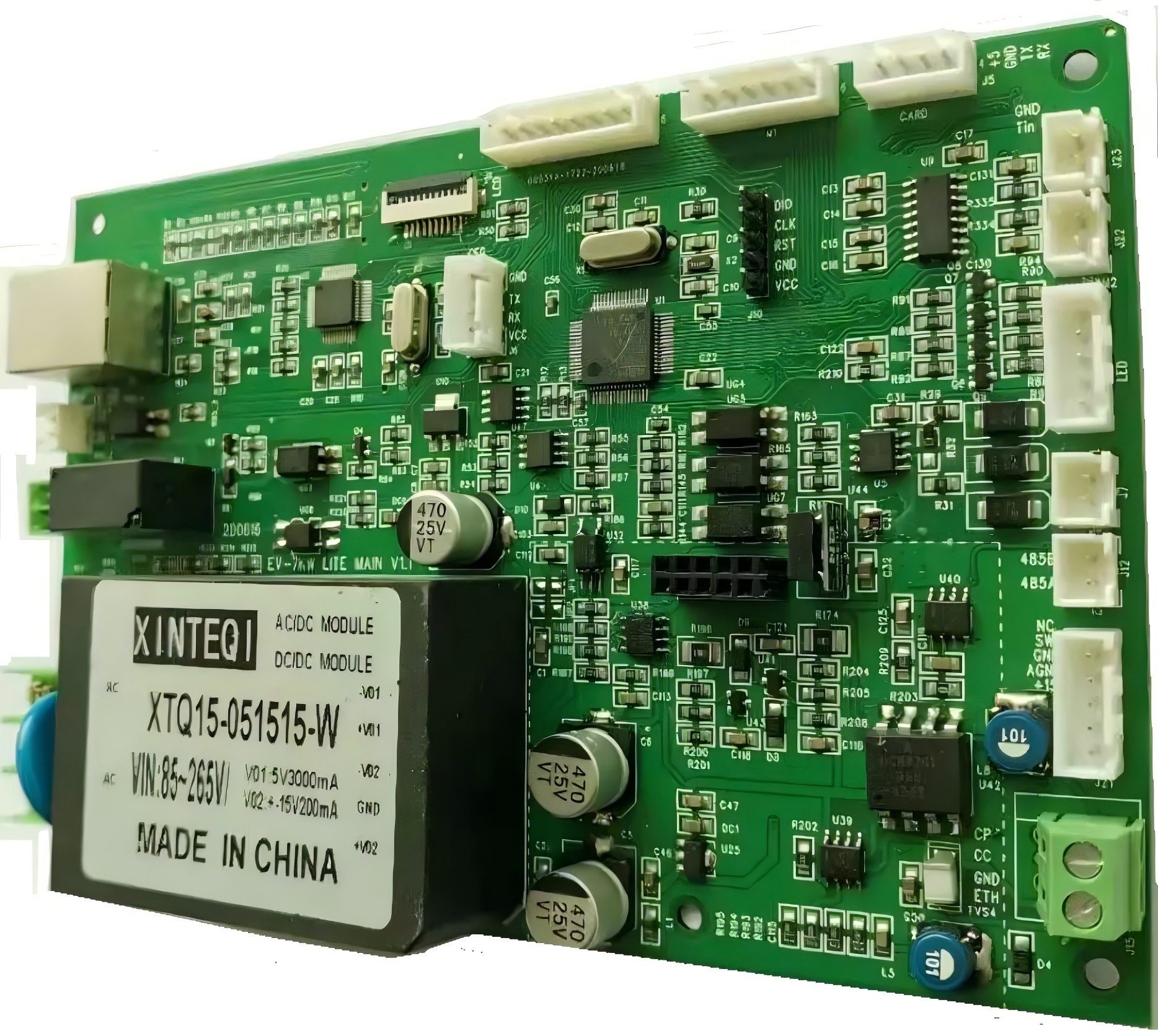
الفصل 7
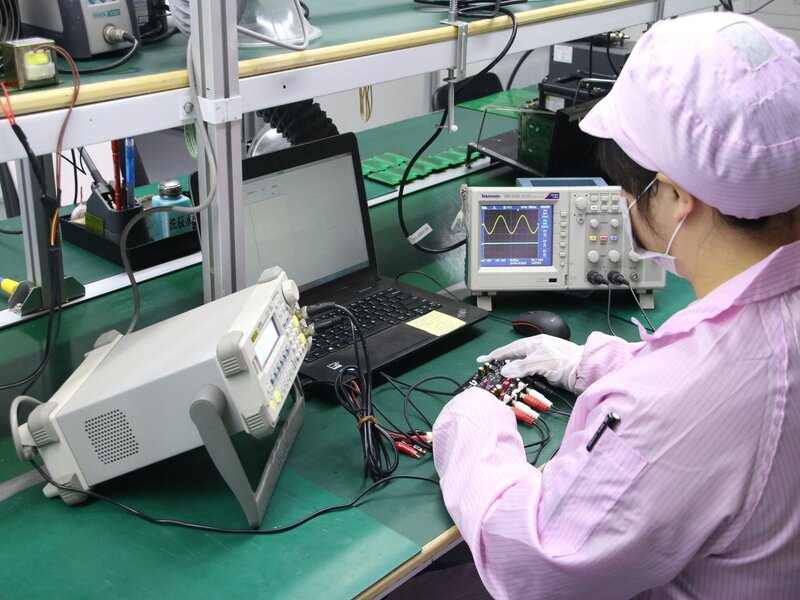
عوامل التكلفة في إنتاج لوحات الدوائر المطبوعة بثماني طبقات
يمكن أن تختلف تكلفة إنتاج لوحة الدوائر المطبوعة بثماني طبقات بشكل كبير استنادًا إلى مجموعة من العوامل. بدءًا من المواد المستخدمة إلى تعقيد التصميم، يلعب كل عنصر دورًا في تحديد السعر النهائي للوحة. في هذه القسم، سنقوم بتحليل العوامل الرئيسية المؤثرة في تكاليف إنتاج لوحات الدوائر المطبوعة بثماني طبقات وسنقدم نصائح لتقليل التكاليف دون التضحية بالجودة.
تحليل العوامل المؤثرة في التكلفة
المواد
مادة الركيزة: يؤثر نوع مادة الركيزة المستخدمة في لوحة الدائرة بثماني طبقات بشكل كبير على التكلفة. تشمل المواد الشائعة الاستخدام FR4، التي تعتبر رخيصة نسبيًا ومتاحة على نطاق واسع، ومواد لاميني محسنة مثل Rogers أو Polyimide، التي تكون باهظة الثمن بشكل كبير بسبب خصائصها الكهربائية المتفوقة والاستقرار الحراري. يعتمد اختيار المادة على متطلبات التطبيق، مثل سلامة الإشارة، التردد، والظروف البيئية.
سمك النحاس: يؤثر سمك طبقات النحاس أيضًا على السعر. يتطلب النحاس الأكثر سمكًا غالبًا للألواح التي تحتاج إلى التعامل مع تيارات أعلى أو تقديم تبديد حراري أفضل، لكنه يزيد من التكاليف المادية. تعتبر طبقات النحاس الأكثر سمكًا (مثل 2 oz/ft² أو أكثر) أغلى من 1 oz/ft² القياسية.
إنهاءات السطح: نوع إنهاء السطح المستخدم على لوحة الدائرة (مثل HASL، ENIG، أو OSP) يؤثر على الأداء والتكلفة. على سبيل المثال، يوفر ENIG (النيكل الغير كهربائي المغطى بالذهب) مقاومة ممتازة للتآكل وهو مثالي لتطبيقات عالية الموثوقية ولكنه أكثر تكلفة من HASL (توازن اللحام بالهواء الساخن).
عدد الطبقات
عدد الطبقات الأعلى يعني تكاليف أعلى: كل طبقة إضافية تزيد من تعقيد لوحة الدائرة، مما يتطلب المزيد من المواد، وتصاميم تكديس أكثر تعقيدًا، وخطوات تصنيع إضافية. تعتبر لوحة الدائرة بثماني طبقات بالطبيعة أكثر تكلفة من اللوحات ذات الأربع أو الست طبقات بسبب الطبقات الداخلية الإضافية وعملية التصفيح الأكثر تعقيدًا. كلما زاد عدد الطبقات المطلوبة، زادت تكلفة التصنيع بسبب زيادة العمالة والحاجة إلى معدات متخصصة لمحاذاة وتصفيح الطبقات بشكل صحيح.
عملية التصفيح: تزداد تعقيد عملية التصفيح مع زيادة عدد الطبقات. في لوحة PCB بثماني طبقات، يجب محاذاة وتصفيح عدة طبقات من المواد البينية (العازلة) والطبقات الأساسية بعناية تحت ظروف دقيقة لتجنب العيوب مثل عدم المحاذاة أو التفكك، مما يزيد من التكلفة.
تعقيد التصميم
استراتيجيات التوجيه المتقدمة وأنواع الفتحات: يمكن أن تزيد الاستراتيجيات المعقدة للتوجيه مثل التوصيلات الكثيفة (HDI)، الفتحات العمياء، الفتحات المدفونة، والميكروفات من التكاليف بشكل كبير. تتطلب هذه التكنولوجيا معدات متقدمة ووقتًا أكبر للتصنيع. بالإضافة إلى ذلك، يحتاج التصميم مع المكونات ذات الخطوط الدقيقة أو متطلبات الإشارات عالية السرعة إلى التحكم الدقيق في عرض المسارات ومسافات الفتحات، مما يزيد أيضًا من تكلفة الإنتاج.
التحكم في المعاوقة: غالبًا ما تكون اللوحات ذات المعاوقة المسيطر عليها مطلوبة للتطبيقات عالية السرعة أو عالية التردد، مما يجعلها أكثر تكلفة في التصنيع لأنها تتطلب درجات حرارة صارمة خلال التصنيع واهتمامًا دقيقًا بتصميم المسارات وتكوين الطبقات.
إدارة حرارية: تتطلب بعض التطبيقات تقنيات إدارة حرارية متقدمة، مثل استخدام الفتحات الحرارية، أو المبردات، أو اللامينات الخاصة ذات الموصلية الحرارية العالية. تضيف هذه التدابير تعقيدًا وتكلفة لعملية الإنتاج.
حجم الإنتاج
النماذج الأولية مقابل الإنتاج الضخم: يؤثر حجم الإنتاج بشكل كبير على تكلفة الوحدة من لوحة الدائرة بثماني طبقات. تكون دفعات الطلب الصغيرة أو النماذج الأولية أكثر تكلفة بكثير لكل لوحة لأن تكاليف الإعداد (مثل إعداد الأدوات وإجراء الاختبارات) تتوزع على وحدات أقل. بالمقابل، يسمح الإنتاج الضخم بالاستفادة من وفورات الحجم، مما يقلل من التكلفة لكل وحدة.
تكاليف الإعداد: تتضمن كل دفعة إنتاج تكاليف إعداد لإنشاء الأدوات اللازمة، وضبط المعدات، وتحضير المواد. بالنسبة للطلبات ذات الحجم المنخفض، يمكن أن تمثل هذه التكاليف جزءًا كبيرًا من السعر الإجمالي. يسمح الإنتاج الأكبر بتوزيع هذه التكاليف الثابتة على العديد من الوحدات، مما يؤدي إلى تقليل تكلفة كل لوحة.
نصائح لتقليل التكاليف دون المساس بالجودة
اختيار المادة المناسبة للتطبيق
تحسين اختيار المواد: بينما تقدم المواد عالية الأداء مثل Rogers أو Polyimide خصائص كهربائية وحرارية ممتازة، قد لا تكون ضرورية لجميع التطبيقات. إذا كان تصميمك لا يتطلب الخصائص المتقدمة لهذه المواد، فإن اختيار مادة أقل تكلفة مثل FR4 يمكن أن يقلل من التكاليف دون التأثير على أداء اللوحة للتطبيقات ذات الترددات المنخفضة أو الأقل تطلبًا.
تقييم سمك النحاس: استخدم سمك النحاس القياسي البالغ 1 oz/ft² ما لم يتطلب تصميمك معالجة تيار أعلى أو تبديد حراري أفضل. قم بزيادة سمك النحاس فقط إذا كان ذلك ضروريًا تمامًا، حيث يمكن أن تضيف هذه الزيادة بشكل كبير إلى التكاليف المادية.
تبسيط التصميم عندما يكون ذلك ممكنًا
التقليل من أنواع الفتحات: الفتحات العمياء والمدفونة والميكروفات ضرورية لبعض التصاميم الكثيفة، لكنها يمكن أن تكون مكلفة. إذا كان تصميمك يسمح باستخدام الفتحات القياسية، اختر هذه بدلاً من ذلك لتقليل التعقيد وتكاليف التصنيع.
تحديد التحكم في المعاوقة: إذا لم تتطلب تطبيقاتك تحكمًا صارمًا في المعاوقة، يمكن أن يؤدي تبسيط تصميم المسار إلى تقليل تكاليف الإنتاج. يتطلب التحكم في المعاوقة درجات حرارة دقيقة أثناء التصنيع، مما يزيد من التكاليف، لذا استخدمه فقط عند الضرورة للتصاميم عالية السرعة أو RF.
تحسين استخدام الطبقات: تأكد من أن تصميمك بثماني طبقات يستخدم الطبقات بفعالية لتوجيه الإشارات وتوزيع الطاقة والأرض. تجنب إضافة طبقات غير ضرورية، حيث تزيد كل طبقة إضافية من تكاليف المواد والتصنيع. من خلال تحسين تصميم الطبقات والاستفادة القصوى من الطبقات المتاحة، يمكنك تحقيق كفاءة أفضل في التكاليف.
الاستفادة من الخصومات على الحجم
التخطيط للإنتاج الضخم: إذا كان ذلك ممكنًا، قم بتجميع الطلبات للاستفادة من وفورات الحجم التي تقدمها الدفعات الإنتاجية الأكبر. الطلب بالجملة يقلل بشكل كبير من تكلفة كل وحدة، حيث تُوزع تكاليف الإعداد على عدد أكبر من اللوحات. إذا كنت تتوقع الحاجة إلى المزيد من اللوحات في المستقبل القريب، غالبًا ما يكون من الأكثر فعالية من حيث التكلفة تقديم طلب أكبر مقدمًا.
النماذج الأولية مع عدد أقل من الطبقات: إذا كنت في مرحلة النماذج الأولية ولا يتطلب تصميمك الوظائف الكاملة للوحة بثماني طبقات، فكر في استخدام لوحة أبسط مع عدد أقل من الطبقات للاختبار الأولي. يمكن أن يساعد ذلك في تقليل التكاليف أثناء التطوير مع السماح لك أيضًا بالتحقق من الوظيفة الأساسية لتصميمك.
العمل مع مصنعي PCBs ذوي الخبرة
اختيار مُصنِّع ذو خبرة مثبتة: العمل مع مُصنِّع متخصص في لوحات الدوائر متعددة الطبقات يمكن أن يساعدك على تجنب الأخطاء المكلفة أثناء الإنتاج. يمكن للمُصنِّع ذي الخبرة إرشادك حول كيفية تحسين تصميمك من أجل القابلية للتصنيع (DFM)، مما قد يوفر لك الوقت والمال من خلال التعرف على القضايا المحتملة مبكرًا في العملية.
طلب مراجعات تصميم لتسهيل التصنيع (DFM): قبل الانتهاء من تصميمك، اطلب مراجعة DFM من المُصنِّع الخاص بك. ستساعد هذه المراجعة في التعرف على التحديات أو عدم الكفاءة المحتملة في تصميمك، مثل التعقيد غير الضروري، الميزات التي يصعب تصنيعها، أو التحملات المفرطة، واقتراح تحسينات لجعل عملية الإنتاج أكثر فعالية من حيث التكلفة دون المساومة على الجودة.
تقليل عدد التخصيصات
- توحيد مواصفات اللوحة: تجنب استخدام ميزات مخصصة للغاية ما لم يكن ذلك ضروريًا. على سبيل المثال، التزم بسماكات اللوحة القياسية، وأحجام الثقوب، وإنهاءات السطح لتقليل التكاليف. غالبًا ما تتطلب المواصفات المخصصة خطوات معالجة إضافية ومواد متخصصة، مما يزيد من الوقت والتكلفة في التصنيع.
الخاتمة
تتأثر تكلفة إنتاج لوحة الدائرة بثماني طبقات بعوامل مختلفة، بما في ذلك اختيار المواد، عدد الطبقات، تعقيد التصميم، وحجم الإنتاج. بينما تأتي لوحات الدوائر متعددة الطبقات بشكل طبيعي مع تكاليف أعلى بسبب تعقيدها، هناك العديد من الاستراتيجيات التي يمكنك استخدامها لتحسين التكاليف دون المساومة على الجودة. من خلال اختيار المواد المناسبة لتطبيقك، وتبسيط تصميمك، والاستفادة من الخصومات على الحجم، والتعاون مع مُصنِّع ذو خبرة، يمكنك تحقيق توازن بين كفاءة التكلفة والأداء العالي في إنتاج لوحة الدائرة بثماني طبقات.
الفصل 8
الاعتبارات الرئيسية في تصميم لوحات الدوائر المطبوعة بثماني طبقات
عند تصميم لوحة دوائر مطبوعة بثماني طبقات، هناك عدة عوامل حاسمة تحتاج إلى أخذها بعين الاعتبار لضمان الأداء الأمثل. تشمل هذه العوامل سلامة الإشارة، إدارة الحرارة، توصيل الطاقة، والموقع المناسب للفتحات واستراتيجيات التوجيه. يلعب كل من هذه العناصر دورًا حاسمًا في تحديد مدى كفاءة وموثوقية ووظائف المنتج النهائي الخاص بك.
سلامة الإشارة
تعتبر سلامة الإشارة مهمة بشكل خاص، خاصة في التطبيقات عالية السرعة أو الترددات العالية. مع وجود 8 طبقات للعمل بها، يمكنك تخصيص طبقات محددة لتوجيه الإشارة ووضعها بجوار طبقات الأرض، مما يساعد على تقليل التداخل والتداخل الكهرومغناطيسي (EMI). من خلال الحفاظ على أطوال المسارات قصيرة والتحكم بعناية في المعاوقة، يمكنك الحفاظ على سلامة الإشارة، مما يضمن نقل الإشارات بدقة وموثوقية عبر اللوحة.
إدارة الحرارة
تعتبر إدارة الحرارة اعتبارًا رئيسيًا آخر عند تصميم لوحة PCB بثماني طبقات. مع زيادة عدد المكونات والطبقات في مساحة أصغر، تنتج اللوحة مزيدًا من الحرارة. لمنع ارتفاع درجة الحرارة وضمان الموثوقية على المدى الطويل، يمكنك استخدام تقنيات مثل الفتحات الحرارية، التي تساعد على نقل الحرارة بين الطبقات، وارتفاع طبقات النحاس لتحسين تبديد الحرارة. إن إدارة الحمل الحراري بشكل صحيح تضمن أن تعمل اللوحة ضمن نطاقات درجات حرارة آمنة، حتى في التطبيقات ذات القدرة العالية.
توصيل الطاقة
يعد ضمان توصيل الطاقة المستقر عبر جميع المكونات أمرًا حاسمًا، خاصة في التصاميم المعقدة ذات الكثافة العالية. من خلال تخصيص طبقات محددة لطبقات الطاقة والأرض، يمكن للمصممين إنشاء مسار منخفض المقاومة لتوزيع الطاقة، مما يقلل من تقلبات الجهد والضوضاء. كما يعمل الموقع المناسب لطبقات الطاقة على تحسين سلامة الإشارة وإدارة الحرارة، حيث يمكن أن تساعد طبقات الطاقة في حماية الإشارات الحساسة وتوزيع الحرارة بشكل أكثر توازنًا عبر اللوحة.
توزيع الفتحات واستراتيجيات التوجيه
تعتبر الفتحات، التي توفر اتصالات كهربائية بين الطبقات، ضرورية في تصميم PCB بثماني طبقات. يعتبر الموقع المناسب للفتحات أمرًا حيويًا للحفاظ على سلامة الإشارة وضمان توزيع الطاقة بشكل فعال. يجب على المصممين وضع الفتحات بعناية لتقليل انعكاس الإشارة وفقدانها، خاصة في التصميمات عالية السرعة. بالإضافة إلى ذلك، فإن استخدام الفتحات العمياء أو المدفونة يمكن أن يساعد في توفير المساحة وتقليل التداخل في الإشارة، مما يسمح بتوجيه أكثر كفاءة للدارات المعقدة. تساعد استراتيجيات التوجيه المثلى، مثل توجيه أزواج الفرق للإشارات عالية السرعة والتخطيط الدقيق لمسارات المسارات، على تجنب تدهور الإشارة وضمان التشغيل الموثوق.
الخاتمة
باختصار، يتطلب تصميم لوحة دوائر مطبوعة بثماني طبقات اهتمامًا دقيقًا بسلامة الإشارة، وإدارة الحرارة، وتوصيل الطاقة، وتوزيع الفتحات. من خلال معالجة هذه الاعتبارات الرئيسية، يمكن للمصممين التأكد من أن لوحاتهم تلبي متطلبات الأداء مع الحفاظ على الموثوقية والكفاءة، حتى في التطبيقات المعقدة عالية الطلب.

الفصل 9

الاختبار وضمان الجودة للوح الدوائر المطبوعة بثماني طبقات
يحتاج ضمان جودة وموثوقية لوحات الدوائر المطبوعة بثماني طبقات إلى عملية دقيقة من الاختبارات وضمان الجودة. يتم استخدام عدة طرق اختبار للتحقق من أن اللوحة تلبي مواصفات التصميم وتؤدي بشكل موثوق في التطبيق المقصود.
طرق الاختبار الشائعة
الاختبارات الكهربائية: تشمل هذه الاختبارات اختبارات الاستمرارية والعزل للتأكد من أن جميع الاتصالات تم إجراؤها بشكل صحيح وأنه لا توجد دوائر قصيرة أو دوائر مفتوحة. وغالبًا ما يتم إجراء هذه الاختبارات باستخدام معدات اختبار آلية مثل مختبرات الفتحات الطائرة أو “سرير من المسامير” للتحقق من سلامة المسارات الكهربائية عبر عدة طبقات.
اختبارات الإشارة: بالنسبة لللوحات عالية السرعة والترددات العالية، يعتبر اختبار سلامة الإشارة أمرًا حاسمًا. يتضمن ذلك التحقق من معوقات المسارات، وتقييم جودة الإشارة، والتحقق من عدم وجود فقدان مفرط للإشارة أو تداخل. يضمن اختبار الإشارة أن اللوحة يمكنها التعامل مع معدلات بيانات عالية دون تدهور في الأداء.
اختبارات المتانة: يتم إجراء اختبارات بيئية، مثل اختبار الدورات الحرارية واختبارات الضغط الميكانيكي، لضمان قدرة اللوحة على تحمل الظروف الواقعية. تقوم هذه الاختبارات بتقييم قدرة اللوحة على العمل تحت تقلبات درجات الحرارة، والرطوبة، والضغط الميكانيكي، مما يضمن الموثوقية على المدى الطويل.
أهمية الشهادات
تعتبر الشهادات مثل UL و CE و ISO ضرورية في تأسيس الجودة والسلامة للوح الدوائر المطبوعة بثماني طبقات:
شهادة UL (مختبرات التأمين): تضمن أن اللوحة تلبي معايير أمان معينة، لا سيما من حيث الاشتعال والأداء الكهربائي، مما يجعلها ضرورية للتطبيقات التي تكون فيها السلامة أولوية.
علامة CE: تشير إلى أن اللوحة تلبي المعايير الصحية والسلامة والبيئية المطلوبة للمنتجات المباعة ضمن المنطقة الاقتصادية الأوروبية (EEA)، مما يضمن أن اللوحة تفي بالمتطلبات التنظيمية الصارمة.
شهادات ISO (المنظمة الدولية للتوحيد القياسي): مثل ISO 9001، تظهر أن الشركة المصنعة تتبع أنظمة إدارة الجودة، مما يضمن جودة إنتاج ثابتة والامتثال لمعايير الصناعة.
الخاتمة
الاختبار وضمان الجودة ضروريان لضمان أن تكون لوحات الدوائر المطبوعة بثماني طبقات موثوقة وآمنة للاستخدام في التطبيقات المت demanding. تضمن الاختبارات الكهربائية، واختبارات سلامة الإشارة، وتقييمات المتانة أن تعمل اللوحات كما هو مقصود، بينما تضمن الشهادات مثل UL و CE و ISO أنها تفي بمعايير الصناعة المعترف بها من حيث الأداء والسلامة.
الفصل 10
اختيار المورد المناسب
يعد اختيار المورد المناسب لاحتياجاتك من لوحات الدوائر المطبوعة بثماني طبقات أمرًا حاسمًا لضمان إنتاج عالي الجودة، وتسليم في الوقت المحدد، ودعم عملاء ممتاز. يجب أخذ عدة عوامل في الاعتبار عند تقييم الموردين المحتملين.
العوامل الرئيسية التي يجب مراعاتها
الخبرة: تعد خبرة المورد في إنتاج لوحات الدوائر المطبوعة بثماني طبقات وغيرها من اللوحات متعددة الطبقات أمرًا حيويًا. من المرجح أن يقدم المورد ذو السجل القوي في صناعة اللوحات المعقدة عالية الأداء منتجات موثوقة. ابحث عن مورد له تاريخ مثبت في صناعات مثل الاتصالات، السيارات، والأجهزة الطبية، حيث تُستخدم لوحات الدوائر المطبوعة بثماني طبقات بشكل شائع.
الشهادات: تأكد من أن المورد يحمل الشهادات الرئيسية في الصناعة مثل UL و ISO9001 و IATF16949 (للتطبيقات في مجال السيارات). تشير هذه الشهادات إلى أن المورد يتبع معايير صارمة من حيث مراقبة الجودة والسلامة. تعتبر شهادات مثل CE أيضًا مهمة إذا كان منتجك موجهًا للسوق الأوروبية.
دعم العملاء: يعد الدعم السريع والمطلع أمرًا أساسيًا، خاصة عند التعامل مع تصميمات PCB المعقدة. اختر موردًا يقدم تواصلًا واضحًا، وتحديثات في الوقت المناسب حول حالة الإنتاج، ودعم ما بعد البيع لمعالجة أي مشكلات محتملة بسرعة.
سرعة التسليم: تعد القدرة على الالتزام بالمواعيد النهائية الضيقة أمرًا حاسمًا في تطوير المنتجات. قم بتقييم قدرة المورد الإنتاجية وسجله في تقديم المنتجات في الوقت المحدد. يمكن أن تكون الشركات التي تقدم خدمات النماذج السريعة أو خيارات الإنتاج المعجل ذات قيمة خاصة خلال المراحل الأولى من تطوير المنتج.
كيفية تقييم جودة المورد وموثوقيته
طلب عينات أو دراسات حالة: يجب أن يكون المورد الموثوق قادرًا على تقديم أمثلة على الأعمال السابقة، سواء من خلال عينات أو دراسات حالة لمشروعات PCB بثماني طبقات مماثلة. سيوفر لك هذا فكرة عن قدراتهم الإنتاجية وجودة مخرجاتهم.
التحقق من المراجعات والمراجع: ابحث عن تقييمات أو شهادات من عملاء آخرين عملوا مع المورد. تعد الملاحظات الإيجابية من العملاء في مجالك مؤشرًا قوياً على موثوقية وجودة المورد.
إجراء تدقيق المصنع: إذا كان ممكنًا، قم بزيارة منشأة المورد أو اطلب جولة افتراضية لتقييم عمليات التصنيع، والمعدات، وإجراءات مراقبة الجودة. المصنع الذي يتم صيانته جيدًا ومجهز بشكل صحيح هو علامة جيدة على أن المورد يمكنه تقديم لوحات دوائر مطبوعة عالية الجودة.
الخاتمة
عند اختيار مورد للوح الدوائر المطبوعة بثماني طبقات، من الضروري مراعاة عوامل مثل الخبرة والشهادات ودعم العملاء وسرعة التسليم. سيساعد تقييم هذه العناصر ومراجعة العينات أو المراجع في العثور على مورد يلبي معايير الجودة الخاصة بك وجداول المشروع، مما يضمن شراكة ناجحة ومنتج نهائي عالي الأداء.

تواصل معنا
أين نحن؟
الحديقة الصناعية، رقم 438 شارع دونغ هوان، رقم 438، شاجينغ دونغ هوان، منطقة باوان، شنتشن، قوانغدونغ، الصين
الطابق 4، مبنى زهيهوي الإبداعي، رقم 2005 شارع شيهوان، شاجينغ، منطقة باوان، شنتشن، الصين
الغرفة A1-13، الطابق 3، مركز يي ليم الصناعي، 2-28 شارع كواي لوك، كواي تشونغ، هونغ كونغ
service@southelectronicpcb.com
الهاتف: +86 400 878 3488
أرسل لنا رسالة
كلما كانت التفاصيل أكثر دقة، كلما تمكنا من المضي قدمًا إلى الخطوة التالية أسرع.



